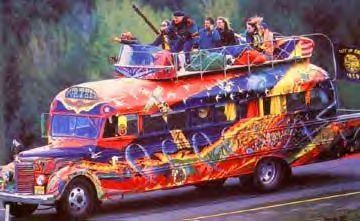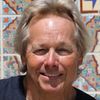
Too often our view of history is so burdened by the distant past that we simply fail to realize the history that is being made in the present or the near past. To many recent graduates of high schools and colleges history fails to cover the past fifty years, foregoing the enormous changes that our country and the world experienced during the decade of the sixties. From seismic advances in civil rights to the maturation of the middle class, to the chaos that accompanied a growing acknowledgement of segregation (de jure in the South and de facto in the North), to the development of a mobile society and workforce fostered by a national transportation network that encouraged sprawl and access, the sixties was an explosive time.
But there were societal changes afoot that were a natural byproduct of a society both growing in material wealth and bogged down in a senseless conflict on the other side of the world that would forever stain any notions of a great benevolent superpower as a shining example of justice and equality. Two Kennedys assassinated, one King, one Malcom X, and cities in flames extinguished hope and sapped energy of a future without limits. Vietnam severely tested our strength and like cutting off Sampson’s locks exposed the weakness of our commitment to professed ideals.
Yet emerging from the confusion and smoke created by this firestorm like the Phoenix rising from the ashes was a movement that captured the imagination and dreams of the nation’s youth that a different notion of what constituted a more perfect union was possible. This past July 4th I had the great good fortune to celebrate the birth of the nation in Santa Cruz with several individuals who were part of the movement to re-evaluate our collective conscience during that decade known as the Merry Pranksters.
For the uninitiated there were two vibrant strains of counterculture that defined the sixties: in the fifties and stretching into the early part of the sixties the Beat Generation sought to challenge societal norms through novels, poetry and live performances infused with lyrics meant to provoke conventional wisdom best represented by the likes of Allen Ginsberg and Jack Kerouac; the later part of the decade spawned the emergence of the so-called Hippies, who found considerable voice through the anti-war movement and psychedelic rock music and widespread drug experimentation.
The bridge that served to connect these two islands of nonconformity was constructed by a group of devotees of Jack Kerouac, Neal Cassady, Ken Kesey, and the Grateful Dead who became known as the Merry Pranksters. Kesey, who established his literary chops by penning One Flew Over the Cuckoo’s Nest, organized an effort to take a 1939 International Harvester school bus, resplendently appointed in psychedelic colors, across the country to attend the 1964 World’s Fair in New York City piloted by Neal Cassady, who had served as the inspiration for Dean Moriarty in Kerouac’s 1957 roman a clef, On the Road.
The connective tissue binding the trip and the movement towards a better society was the liberal and widespread use of lysergic acid diethylamide, better known as LSD, a mind-altering chemical that at the time enjoyed legal status. Kesey had been introduced to the substance by participating in government/military psychological warfare experiments in exchange for cash to determine the effects upon humans.
The magic trip not only served to promote exposure to the heartland but also to connect with Dr. Timothy Leary, the Harvard psychologist who actively promoted the mind-expanding qualities of LSD in controlled circumstances and is most commonly associated with the popularized phrase, “turn on, tune in, drop out.” Although the reception afforded the transcontinental travelers was chilly, and the World’s Fair was disappointing, the traveling roadshow was born, and the bus, appropriately named Furthur, would soon become a fixture at concerts like Woodstock and other “happenings.”
Travel holds a special place in the nation’s history. From the trail-blazing wagon trains that fueled expansion westward dubbed manifest destiny, to the Depression Era train-hopping hobos chronicled by Woody Guthrie, Kerouac’s On the Road, Steinbeck’s Travels With Charley, to the hitchhiking fad that popularized my teenage years, to the motorcycle trek captured in the 1960’s classic Easy Rider, there has been an unquenched thirst for discovering America and its inhabitants.
The restless nature of sixties’-era counterculture revolutionaries is but one more manifestation of our desire to find or promote a better solution to the inanity of a materialistic culture devoid of conscience and held hostage to greed and circular advancement.
This brief history lesson is intended as a preamble to the main event: namely, a two-hour prepared and improvisational conversation between Jack Kerouac, played by Beat scholar and performer Brian Hassett, and Neal Cassady, performed by original Merry Prankster George Walker. An art gallery full of people packed the Tannery Arts Center in Santa Cruz the night before July 4th to hear what can only be described as a fast-moving, free-flowing performance punctuated by verbal gymnastics, comedic dexterity, and a sense of pure and innocent fun. Where the Beat Generation was effectively born at the now-legendary Six Gallery in San Francisco in 1955, it was not lost upon scholars of the movement that it is art galleries that are still hosting and launching such performances in the 21st century.
And make no mistake, this is not designed to be a nostalgic “trip” down memory lane for those of us at an age to have partaken in such hijinks. No, the historic rendition presented by these Pranksters represents an intergenerational treasure trove. If the current political environment has you in a funk, the search for a more positive and constructive future finds a home here. If the current spate of music festivals large and small is any indication of the discontent felt by our millennials, then this show should be well received by audiences of all ages.
As the father of two millennials, who just happen to be musicians, I am constantly amazed at the resiliency of music produced a half century ago. The popularity of the Grateful Dead among today’s youth is astounding to me and the current success of Dead and Company concerts is a testament to the enduring quality and popularity of music produced to reflect another uncertain time.
Santa Cruz County Supervisor John Leopold not only welcomed and introduced the program but has spearheaded an effort to memorialize the movement including dedicating a bus stop at the sight of the first Acid Test in their honor. Springfield, Oregon offers a two-story high mural of Ken Kesey, Jerry Garcia’s image is featured on buildings throughout San Francisco, and Jack Kerouac’s houses have received landmark designations from Florida to Queens to Massachusetts.
The sixties counterculture movement represents a significant piece of history that is both relevant and important today as we struggle in a world that sometimes appears to be spinning off it’s axis. But every bit as important to lessons we can learn from history is the knowledge that comes with understanding who we are and why we are where we are. The context of the times in which the writings, music, and actions of those involved in the turbulence of the sixties helps define who we are as a society today, whether you were a part of the movement or whether you opposed it. It is a part of who we are and the ability to have it presented by first- hand participants is one that sadly will run its course, yet it can still be experienced today.
What a long, strange trip it’s been!
